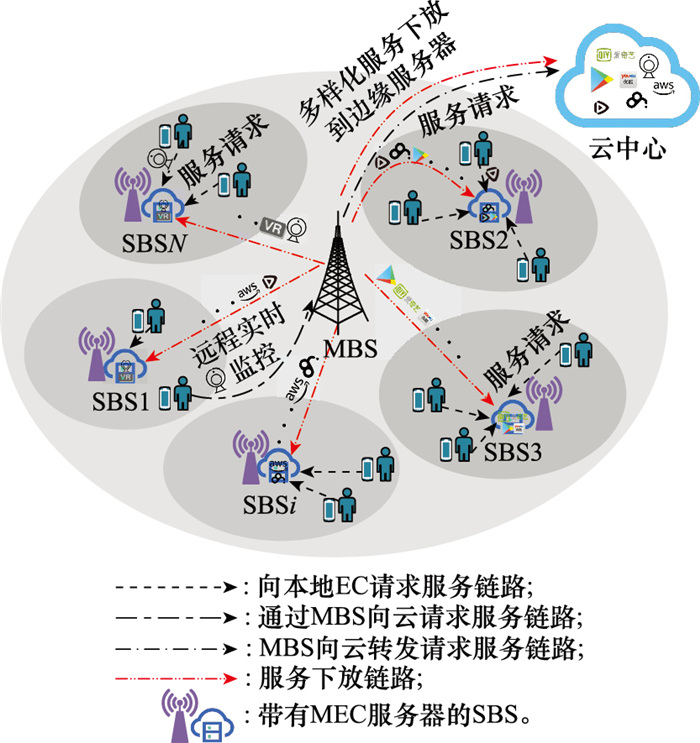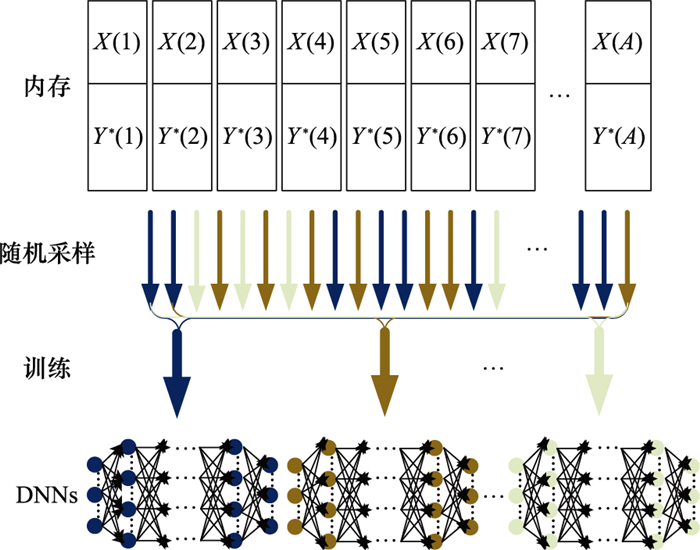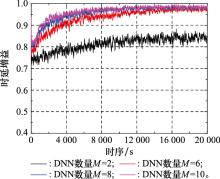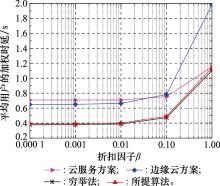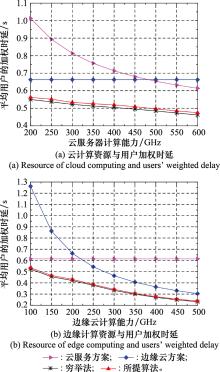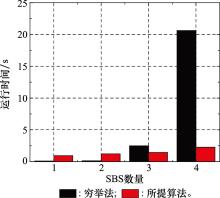| 1 |
TABLET T , SAMDANIS K , MADA B , et al. On multi-access edge computing: a survey of the emerging 5G network edge cloud architecture and orchestration[J]. IEEE Communications Surveys & Tutorials, 2017, 19 (3): 1657- 1681.
|
| 2 |
CISCO. Cisco annual internet report (2018-2023) white paper[EB/OL]. [2021-01-14]. https://www.cisco.com/c/en/us/solutions/collateral/executive-perspectives/annual-internet-report/white-paper-c11-741490.html.
|
| 3 |
ETSI GS MEC-IEG 004 V1.1.1. Mobile-edge computing (MEC) service scenarios[S]. France: European Telecommunications Standards Institute, 2015.
|
| 4 |
王汝言, 聂轩, 吴大鹏, 等. 社会属性感知的边缘计算任务调度策略[J]. 电子与信息学报, 2020, 42 (1): 271- 278.
|
|
WANG E Y , NIE X , WU D P , et al. Social attribute aware task scheduling strategy in edge computing[J]. Journal of Electronics & Information Technology, 2020, 42 (1): 271- 278.
|
| 5 |
GAO B, ZHOU Z, LIU F M, et al. Winning at the starting line: joint network selection and service placement for mobile edge computing[C]//Proc. of the IEEE Conference on Computer Communications, 2019: 1459-1467.
|
| 6 |
BRIK B, FRANGOUDIS P A, KSENTINI A. Service-oriented MEC applications placement in a federated edge cloud architecture[C]//Proc. of the IEEE International Conference on Communications, 2020.
|
| 7 |
JEONGHO K, GEORGE I. DSP: dynamic service placement with reconfiguration cost and delay[C]//Proc. of the International Conference on Information and Communication Technology Convergence, 2020: 244-247.
|
| 8 |
OUYANG T , ZHOU Z , CHEN X . Follow me at the edge: mobility-aware dynamic service placement for mobile edge computing[J]. IEEE Journal on Selected Areas in Communications, 2018, 36 (10): 2333- 2345.
doi: 10.1109/JSAC.2018.2869954
|
| 9 |
CHEN L X , XU J , REN S L , et al. Spatio-temporal edge ser-vice placement: a bandit learning approach[J]. IEEE Trans.on Wireless Communications, 2018, 17 (12): 8388- 8401.
doi: 10.1109/TWC.2018.2876823
|
| 10 |
MOUBAYED A , SHAMI A , HEIDARI P , et al. Edge-en-abled V2X service placement for intelligent transportation systems[J]. IEEE Trans.on Mobile Computing, 2021, 20 (4): 1380- 1392.
doi: 10.1109/TMC.2020.2965929
|
| 11 |
PASTERIS S, WANG S, HERBSTER M, et al. Service placement with provable guarantees in heterogeneous edge computing systems[C]//Proc. of the IEEE Conference on Computer Communications, 2019: 514-522.
|
| 12 |
LI Z D, LV J, WU D P. Intelligent emotion detection method in mobile edge computing networks[C]//Proc. of the IEEE/CIC International Conference on Communications in China, 2020: 1214-1219.
|
| 13 |
CHEN L X , XU J . Budget-constrained edge service provisioning with demand estimation via bandit learning[J]. IEEE Journal on Selected Areas in Communications, 2019, 37 (10): 2364- 2376.
doi: 10.1109/JSAC.2019.2933781
|
| 14 |
SAMI H , MOURAD A , EL-HAJJ W . Vehicular-OBUs-as-on-demand-fogs: resource and context aware deployment of containerized micro-services[J]. IEEE/ACM Trans.on Networking, 2020, 28 (2): 778- 790.
doi: 10.1109/TNET.2020.2973800
|
| 15 |
WANG X F , HAN Y W , LEUNG V C M , et al. Convergence of edge computing and deep learning: a comprehensive survey[J]. IEEE Communications Surveys & Tutorials, 2020, 22 (2): 869- 904.
|
| 16 |
REN J K , YU G D , HE Y H . Collaborative cloud and edge computing for latency minimization[J]. IEEE Trans.on Vehicular Technology, 2019, 68 (5): 5031- 5044.
doi: 10.1109/TVT.2019.2904244
|
| 17 |
WANG F X , ZHANG M , WANG X X , et al. Deep learning for edge computing applications: a state-of-the-art survey[J]. IEEE Access, 2020, 8, 58322- 58336.
doi: 10.1109/ACCESS.2020.2982411
|
| 18 |
WANG X M , ZHANG Y H , SHEN R J , et al. DRL-based energy-efficient resource allocation frameworks for uplink NOMA systems[J]. IEEE Internet of Things Journal, 2020, 7 (8): 7279- 7294.
doi: 10.1109/JIOT.2020.2982699
|
| 19 |
GUO S Y , DAI Y , XU S Y , et al. Trusted cloud-edge network resource management: DRL-driven service function chain orchestration for IoT[J]. IEEE Internet of Things Journal, 2020, 7 (7): 6010- 6022.
doi: 10.1109/JIOT.2019.2951593
|
| 20 |
FU F, KANG Y P, ZHANG Z C, et al. Transcoding for live streaming-based on vehicular fog computing: an actor-critic DRL approach[C]//Proc. of the IEEE Conference on Computer Communications Workshops, 2020: 1015-1020.
|

